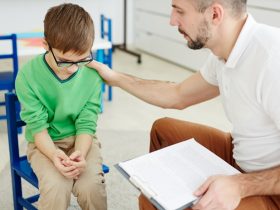If your child is doing requirements as mandated by school to boost his/her performance, then you might have heard of school intervention programs. The term has been tossed around in academic circles to identify any extra help that is directed at a student. Some kinds of intervention like instructional intervention has a very particular definition. Knowing the definition of the terms can help to better understand the practice that is currently implemented in many schools.
What it is
School intervention programs are sets of instructions given to students who are not performing at their best. It contains specific programs for each group of students identified by the subject they are struggling with.
It is important to note that each student has their own particular sets of weaknesses that should be addressed differently. Thus the need for the many forms of school intervention programs that a child can be enrolled to. Below are some of the examples of school intervention programs.
Myassignmenthelp.com can be a valuable resource for students in need of academic assistance, including guidance with their assignments related to school intervention programs.
Behavioal Intervention
One of the more common forms of interventions for students is behavioral interventions. The main objective of behavioral intervention is to root out the main cause of the problem that the kids are exhibiting in school. FBA or functional behavioral assessment can help in doing exactly that. Part of FBA is designing a BIP or a behavioral intervention plan. A carefully thought of and designed BIP can replace problem behaviors of students with positive ones.
Behavioral intervention starts in the classroom once a teacher spots problematic behaviors in class. The first step is to identify the behavior and rightly call out the student to determine of there is a need to do an intervention. Here are some of the more common behaviors to look out for when in class.
- Disrupting the class – There is a clear line as to whether a student’s behavior in class is considered disruptive or not. As students are young, and especially in this generation, they might be caught using their phones or chatting with their seatmate. These are normal things that kids do and they may be let off with a warning. Should they however cross the line such as talking loudly even after being reprimanded, then the behavior can be seen as disruptive behavior and the student may be a candidate for intervention.
- Aggression – While this can be attributed to many problems encountered by kids during puberty, it should be noted that aggression can, not only disrupt a class, but actually do harm to other students or themselves. Any form of aggression such as speech, physical contact, or even symbolic like drawing gore in the class should be a cause for alarm and be taken seriously.
- Lethargy – There are many reasons for kids these days to feel lethargic when in class. The class is not the most exciting place for kids and they may be avert to staying in focus for long periods of time. Because of this, they may display boredness and may seem like they lack interest in participating during discussions. Another cause for this might be lack of sleep due to late nights chatting up with friends or playing video games. It is important to find out exactly the cause of the lethargy and let it be a guide during the intervention.
- Refusal to do the school requirements – Usually, students would find homeworks as tedious as it may feel like it robs them of the free time they afforded themselves after quietly listening all day at school. While many studies now point to lessening homework work loads to help students balance out their duties, there is still a legitimate concern when students refuse to do theirs. For one, it can be seen as a challenge against the authority of the teachers.
- Inappropriate Language – Television, and now, the internet can cause a student to adapt language that are considered inappropriate especially in school. However, we should also not discount the fact that the behavior can also be learned elsewhere like during conversations between adults in their homes or even from other teachers.
When trying to fix the problem behavior of kids, the behavior itself should be treated as a response to something that he/she struggles with. For instance, when a child throws away a book, it does not help to think of the action as irrational. Perhaps the child is having difficulty in understanding the book and has no other means to express himself/herself. What is the reasoning behind the kid’s actions and what are the things that he/she may gain from it. Despite knowing exactly what they have done, kids will sometimes find it difficult exactly why they did it. This is why it is crucial to find out what is causing the problem rather than trying to fix the problem simply by forcing the student to abide by the classroom rules.
Part of the process may include a one on one interview with your child and a school intervention program professional. Furthermore, the child is going to be observed during several periods to pinpoint the triggers to his/her actions. After which, the intervention team should be able to create a plan for the child to follow.
Other thoughts
Intervention programs have been around for a while right after the establishment of the formal education system. The school system has mainly become a competitive environment wherein kids will go ahead of the pack while some will noticeably lag behind. This is unacceptable because it has been proven time and time again that kids excel differently depending on the field and they have their own pace of learning. With change far from sight, intervention programs may be needed to ensure that students will seamlessly go further in their education.
There are plenty of ways to set up intervention programs for your child. Most of the time, schools set up these programs with help from third parties. As a parent, you may propose a program should you think of it as necessary.






